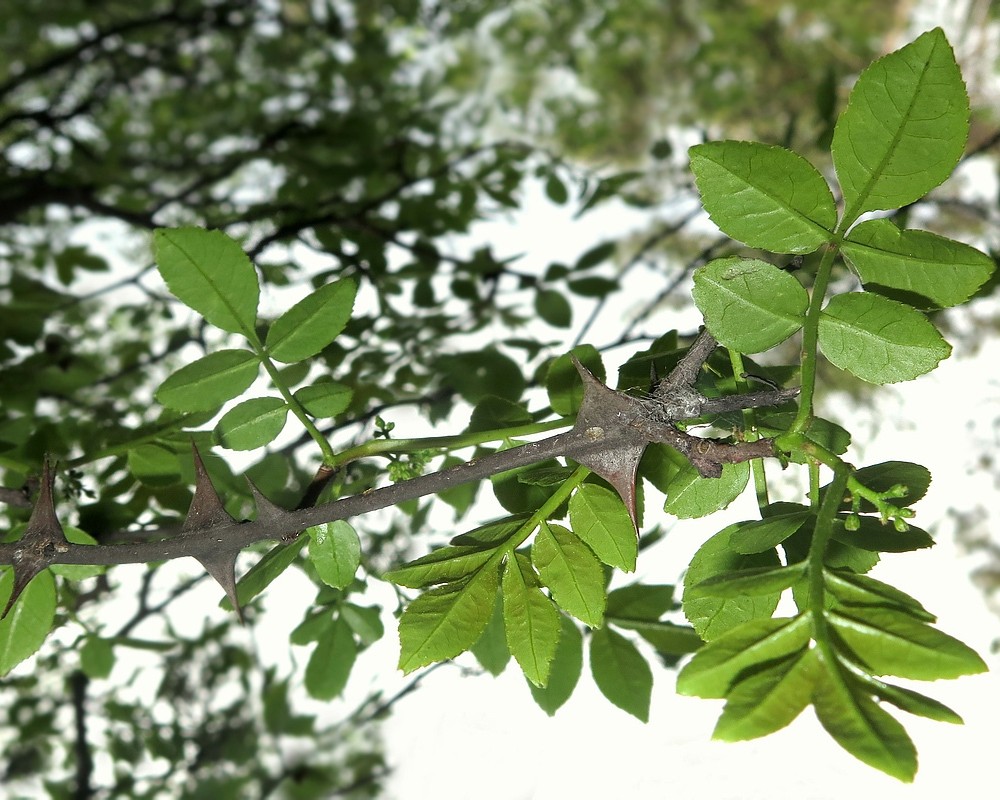Szechuan Pepper
(Zanthoxylum bungeanum)

Description
Zanthoxylum simulans, the Chinese-pepper, Chinese prickly-ash or flatspine prickly-ash, is a flowering plant in the family Rutaceae, native to eastern China and Taiwan. It is one of several species of Zanthoxylum from which Sichuan pepper is produced (see that page for uses). It is a spreading shrub or small tree growing to 7 m tall. The leaves are 7–12.5 cm long, pinnate, with 7–11 leaflets, the leaflets 3–5 cm long and 1.5–2 cm broad. There are numerous short (3–6 mm) spines on both the stems and the leaf petioles, and large (several cm) knobs on the branches. The flowers are produced in slender cymes, each flower about 4–5 mm diameter. The 3–4 mm berry has a rough reddish brown shell that splits open to release the black seeds from inside. Zanthoxylum is a genus of about 250 species of deciduous and evergreen trees, shrubs and climbers in the family Rutaceae that are native to warm temperate and subtropical areas worldwide. It is the type genus of the tribe Zanthoxyleae in the subfamily Rutoideae. Several of the species have yellow heartwood, to which their generic name alludes. Plants in the genus Zanthoxylum are typically dioecious shrubs, trees or woody climbers armed with trichomes. The leaves are arranged alternately and are usually pinnate or trifoliate. The flowers are usually arranged in panicles and usually function as male or female flowers with four sepals and four petals, the sepals remaining attached to the fruit. Male flowers have four stamens opposite the sepals. Female flowers have up to five, more or less free carpels with the styles free or sometimes fused near the tip. The fruit is usually of up to four follicles fused at the base, each containing a single seed almost as large as the follicle. The genus Zanthoxylum was first formally described in 1753 by Carl Linnaeus in the first volume of Species Plantarum. It refers to a yellow dye made from the roots of some species. The first species that Linnaeus described was Zanthoxylum trifoliatum, now regarded as a synonym of Eleutherococcus trifoliatus. The once separate genus Fagara is now included in Zanthoxylum. The genus Fagara has been sunk into Zanthoxylum, but as of September 2021, no name seemed to have been provided for the former Fagara externa, which was regarded as an unplaced name by Plants of the World Online. Zanthoxylum species are used as food plants by the larvae of some Lepidoptera species including the engrailed (Ectropis crepuscularia).
Taxonomic tree:







